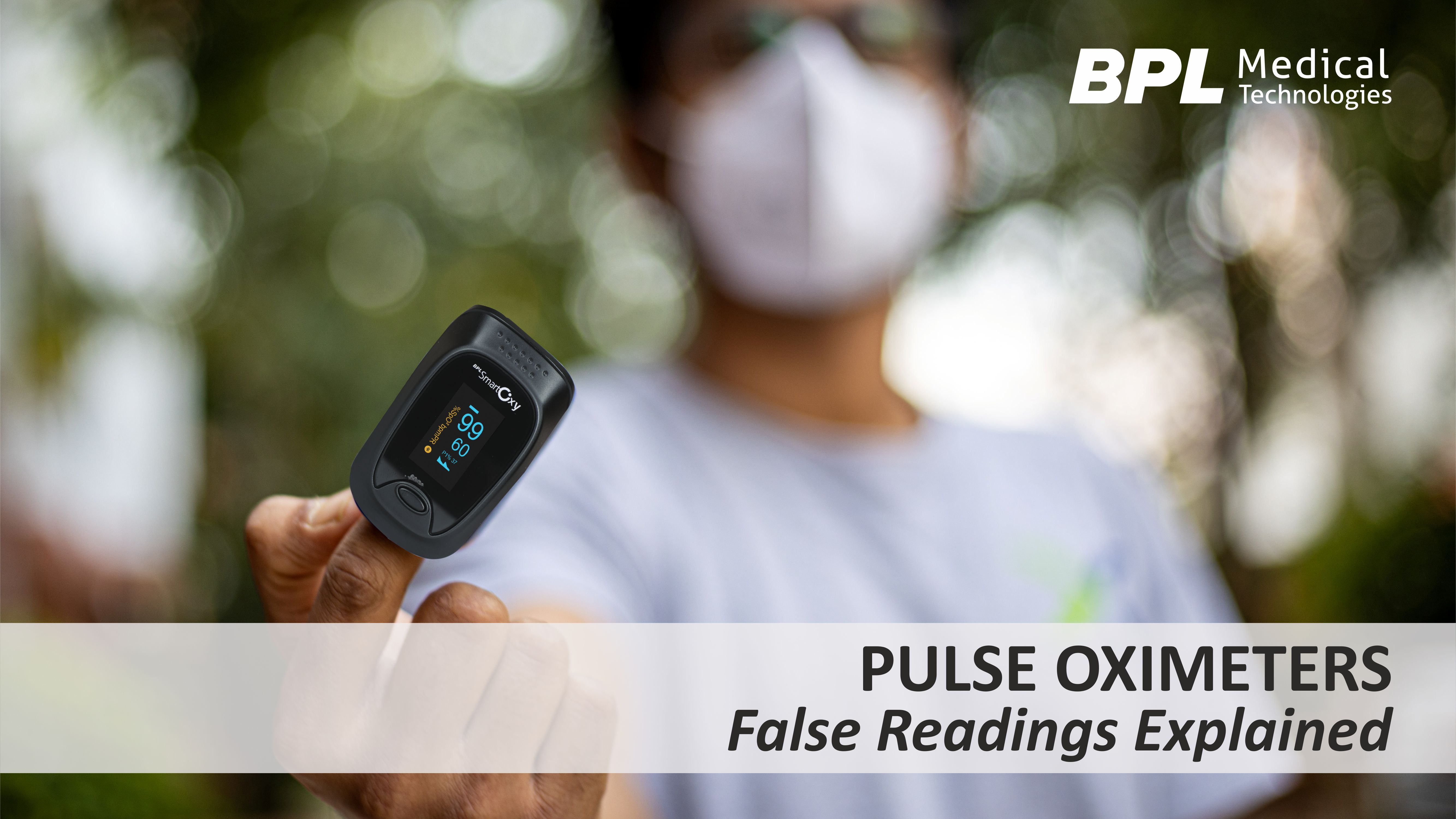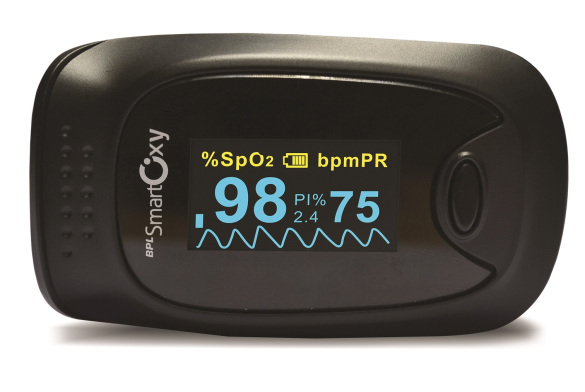
Amid this COVID-19 pandemic, pulse oximeters have become an increasingly common piece of monitoring equipment in most households and clinical settings. People are now more careful and concerned about taking proper safety precautions.
A pulse oximeter is a small, lightweight, and portable device that quickly and easily evaluates the oxygen levels from our fingertips.
Until the COVID-19 pandemic, there wasn’t much awareness about this product. But today, its popularity has surged. However, due to a lack of adequate knowledge of the functioning of the product, there are several misconceptions and confusion around false readings.
So to clear all your misconceptions, please read below. This may involve some technical details, so please read carefully.
Why would a pulse oximeter give a reading when used with a pen or a pencil?
The patient’s condition is detected based on the sensitivity of the amount of red and infrared light falling on the sensor of the pulse oximeter or probe in other machines. When this is obstructed by increasing the distance between the LED and the detector, or by inserting some object inside the probe, the module will think the finger is inserted and will start searching for a pulse. In this condition, the varying intensity of diffused light falling on the detector can cause a pulsating effect and lead to a reading on the pulse oximeter. The pulse oximeter is a very sensitive device. However, if the gap between the LED and the sensor is closed fully, so that no light falls on the detector, the pulse oximeter will sense no pulse and there won’t be any reading.

Small beams of light pass through the blood in the finger, measuring the amount of oxygen. It does this by measuring changes in light absorption in oxygenated or deoxygenated blood. The pulse oximeter will thus be able to tell you your oxygen saturation levels. The same is observed in all other devices.
How Accurate Are Readings of a Pulse Oximeter
A good Pulse Oximeter displays SpO2 recordings along with a graph. A Pulse Oximeter that comes with a PI indication comes in handy for the physician to better assess your condition. BPL pulse oximeters have an accuracy of ±2, which means that the readings are quite accurate. You should consult a medical professional to give you a better idea of how to read a pulse oximeter for your needs.
Why the Readings of a Pulse Oximeter Fluctuates
There are several instances where you might find your pulse oximeter showing irregular readings. This can be due to various factors. Some of them are mentioned below.
1- Nail Polish
2- Cold Hands
3- Injury on the finger

CAUTION
We strongly suggest you to not insert any objects like a pencil, pen, etc in the pulse oximeter to check the readings. This may damage the sensor of the device and can lead to malfunctioning.
For all the medical related equipment and queries, visit here:



Comments
The practical tips shared for effective data preprocessing and cleaning in this article are helpful for data scientists at any level. \r\ndata analyst institute in hyderabad
By data analyst institute in hyderabad
The practical tips shared for effective data preprocessing and cleaning in this article are helpful for data scientists at any level. data analyst institute in hyderabad
By data analyst institute in hyderabad
It is a great post. Keep sharing such kind of useful information. top python software course training institute in hyderabad best python software course training institute in hyderabad best data science with python software course training institute in hyderabad top data science with python software course training institute in hyderabad
By pavithra
Thank you so much for sharing . It helped me very much. top python software course training institute in hyderabad best python software course training institute in hyderabad best data science with python software course training institute in hyderabad top data science with python software course training institute in hyderabad
By pavithra
Thank you for sharing your amazing knowledge on pulse oximeters . Your weblog has helped broaden my understanding of pulse oximeters. Thank you very much again.
By Rajan
If you are interested in a Data Science career, there are several excellent Data Science courses in Noida that can help you get started. So what are you waiting for? Start learning today and discover a world of possibilities at premier Data Science training in Noida.
By Data Science Training in Noida
If you are interested in a Data Science career, there are several excellent Data Science courses in Noida that can help you get started. So what are you waiting for? Start learning today and discover a world of possibilities at premier Data Science training in Noida.
By Data Science Training in Noida
Thanks for sharing such amazing knowledge. You have A very wide knowledge regarding Oximeters. your Blog has enhanced my knowledge regarding oximeters. thanks again.
By Farukh
Thank you so much for sharing . It helped me very much
By Best data science software course training institute in hyderabad
Thanks for the useful Message. GOOD nice best data science software course training institute in hyderabad top data science software course training institute in hyderabad best machine learning software course training institute in hyderabad top machine learning software course training institute in hyderabad top python software course training institute in hyderabad best python software course training institute in hyderabad best data science with python software course training institute in hyderabad top data science with python software course training institute in hyderabad
By Best data science software course training institute in hyderabad
Thanks for the useful Message. GOOD nice best data science software course training institute in hyderabad top data science software course training institute in hyderabad best machine learning software course training institute in hyderabad top machine learning software course training institute in hyderabad top python software course training institute in hyderabad best python software course training institute in hyderabad best data science with python software course training institute in hyderabad top data science with python software course training institute in hyderabad
By Best data science software course training institute in hyderabad
useful information. best data science software course training institute in hyderabad top data science software course training institute in hyderabad best machine learning software course training institute in hyderabad top machine learning software course training institute in hyderabad top python software course training institute in hyderabad best python software course training institute in hyderabad best data science with python software course training institute in hyderabad top data science with python software course training institute in hyderabad
By Best data science software course training institute in hyderabad
Great post. Wonderful information and really very much useful. Thanks for sharing and keep updating.
By Best data science software course training institute in hyderabad
Really good information, this information is excellent and essential for everyone. I am very very thankful to you for providing this kind of information. best data science software course training institute in hyderabad top data science software course training institute in hyderabad best machine learning software course training institute in hyderabad top machine learning software course training institute in hyderabad top python software course training institute in hyderabad best python software course training institute in hyderabad best data science with python software course training institute in hyderabad top data science with python software course training institute in hyderabad
By Best data science software course training institute in hyderabad
I appreciate your hard work, I will keep visiting it.
By Best data science software course training institute in hyderabad
Great post. Wonderful information and really very much useful. Thanks for sharing and keep updating.
By Best data science software course training institute in hyderabad
I learnt lots of useful information.
By Best data science software course training institute in hyderabad
Very informative. Thanks a lot for sharing
By Best data science software course training institute in hyderabad
This is good site and nice point of view.I learnt lots of useful information. best data science software course training institute in hyderabad top data science software course training institute in hyderabad best machine learning software course training institute in hyderabad top machine learning software course training institute in hyderabad top python software course training institute in hyderabad best python software course training institute in hyderabad best data science with python software course training institute in hyderabad top data science with python software course training institute in hyderabad
By Best data science software course training institute in hyderabad
This is good site and nice point of view.I learnt lots of useful information. best data science software course training institute in hyderabad top data science software course training institute in hyderabad best machine learning software course training institute in hyderabad top machine learning software course training institute in hyderabad top python software course training institute in hyderabad best python software course training institute in hyderabad best data science with python software course training institute in hyderabad top data science with python software course training institute in hyderabad
By Best data science software course training institute in hyderabad
So can I conclude that an oximeter should not be used if there is reading while inserted with an object like pen or pencile. Please reply as soon as possible.
By Bill